Enerpower Wall adapter EP-18WQC3B (Flypower PS18Q090K2000EU)

Official specifications:
- Output: 5V/9V/12V 3A/2A/1.5A
- Voltage: 100 - 240 VAC 50/60Hz
- Quick charge V3.0





Measurements
- Power consumption when idle is 0.06 watt
- Usb output is Quick charge and auto coding up to Apple 2.1A
- Minimum output voltage is 3.61V
- Weight: 42.5g
- Size: 81 x 38.5 x 22mm

The charger is rated for 3A at 5V, but can deliver 4.6A, this is a bit high.

At 9V it can deliver about 2.6A, before it drops down to 5V.
Note: I have edited this curve, when dropped to 5V it had many more spikes.
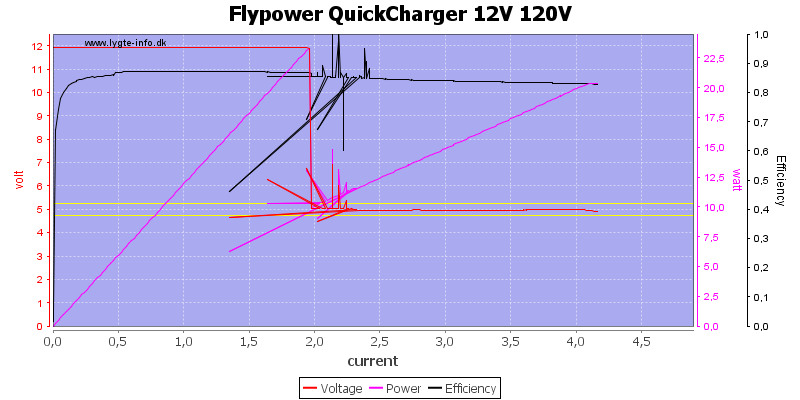
At 12V it can "only" deliver 2A (Rated 1.5A), then it drops down to 5V. This curve here is at 120VAC
Note: I have edited this curve, when dropped to 5V it had many more spikes.

And here at 230VAC
Note: I have edited this curve, when dropped to 5V it had many more spikes.

Running at full output power for one hour is not a problem.
The temperature photos below are taken between 30 minutes and 60 minutes into the one hour test.

M1: 52,7°C, M2: 47,9°C, HS1: 66,1°C
HS1 is the transformer.
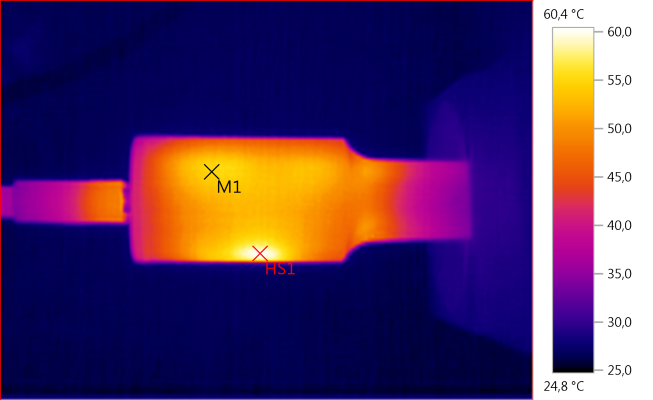
M1: 54,8°C, HS1: 60,4°C

M1: 51,4°C, HS1: 54,1°C
My guess is that HS1 is the two resistors that must dissipate the current spike each time the switcher transistor turns off ( See my article about how a usb charger works).

HS1: 52,2°C
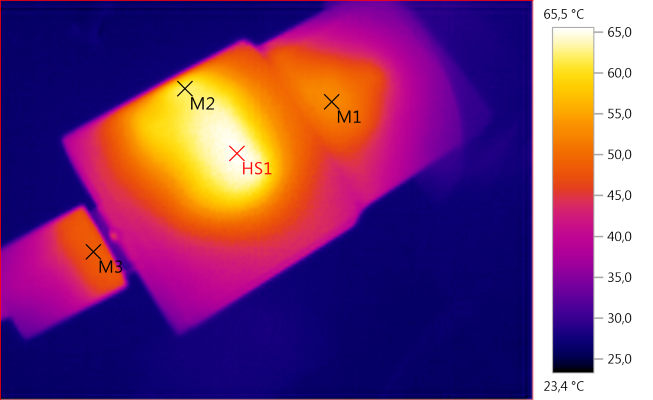
M1: 52,6°C, M2: 62,2°C, M3: 48,2°C, HS1: 65,5°C

Noise at 0.5A load is: 15mV rms and 476mVpp, the charger has a some peak noise.
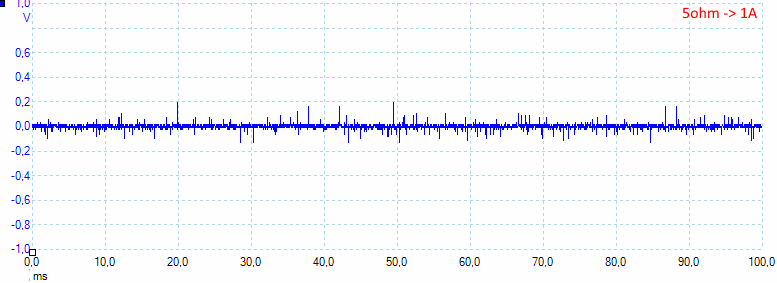
Noise at 1A load is: 18mV rms and 445mVpp.
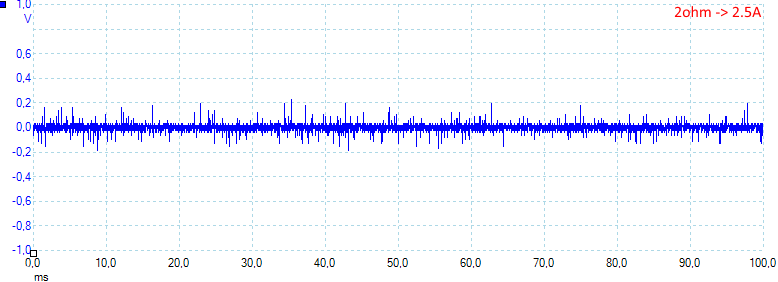
Noise at 2.5A load is: 28mV rms and 476mVpp.

Noise at QC 9V 1.8A load is: 27mV rms and 459mVpp.

Noise at QC 12V 1.2A load is: 24mV rms and 464mVpp.
Tear down
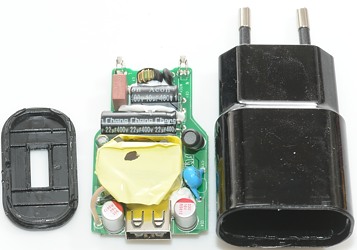
When I squeezed the charger a on my vice the lid could be removed.
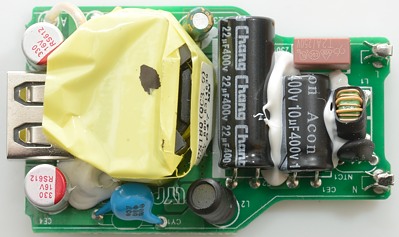
At the mains input there is a inrush current limiter (NTC resistor: NTC1), a fuse and a common mode coil (L1).
The inductor L2 is placed between the two 400V capacitors. Beside the inductor there is a safety capacitor (CY1).

The inrush limiter, the inductor and the safety capacitor can be seen from this side.

Here is the usb connector and two smooting capacitors, the transformer uses flying leads, this increases the safety distance.

The fuse and the flying leads can be seen from this side.

There is two connectors to connect to the mains pins here. There is also a good side view of the common mode coil.

The bridge rectifier is made with four diodes (BD1..BD4). Switcher controller, transistor, synchronous rectifier control, reference, opto coupler is placed in one IC (INN2215K U1). This chip has isolation for 6kV DC or 3.5kVAC, can deliver 20W at 12V.
To get QC3 control another chip is needed (PGZ69? I could not read the last character: U2). The transistor Q1 is used for the rectification


The isolation distance looks fine.
Testing with 2830 volt and 4242 volt between mains and low volt side, did not show any safety problems.
Conclusion
The charger has good efficiency, can easily deliver rated current and works fine with QC2/QC3, safety looks fine. I could have wished for less noise.
I will call it a good charger.
Notes
Charger was supplied by Enerpower for review.
Index of all tested USB power supplies/chargers
Read more about how I test USB power supplies/charger
How does a usb charger work?





























